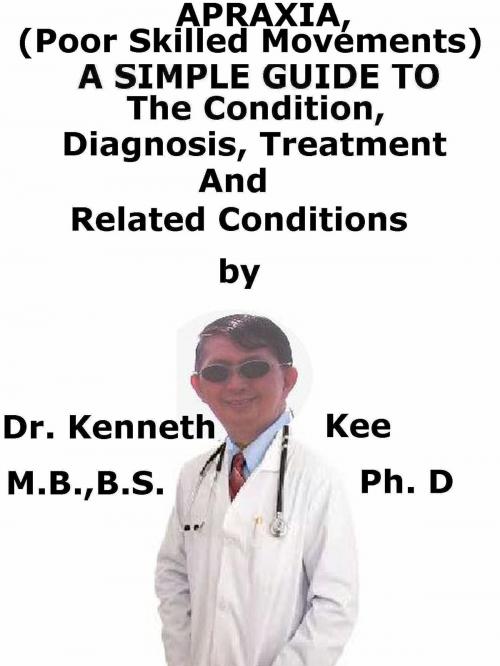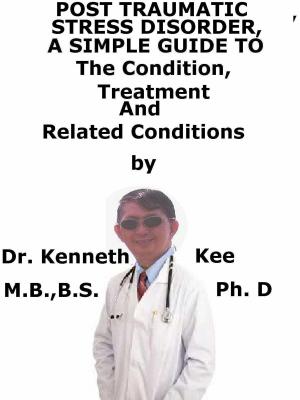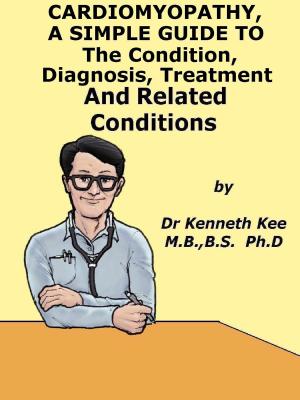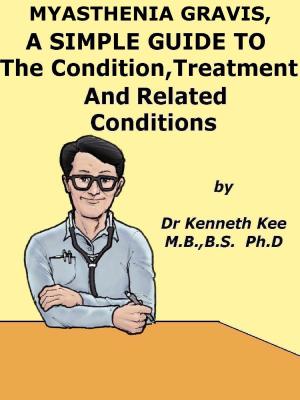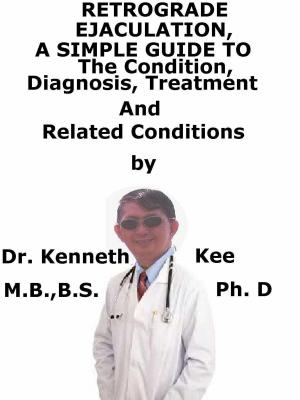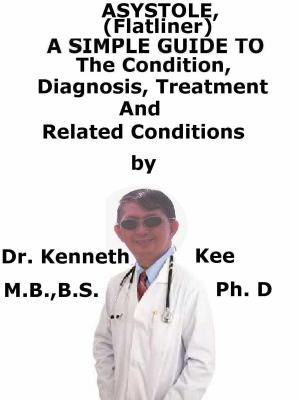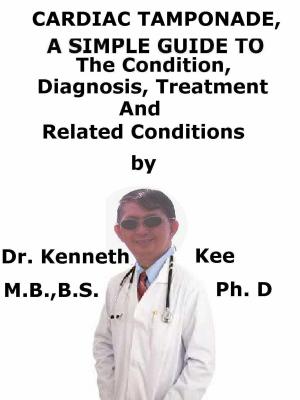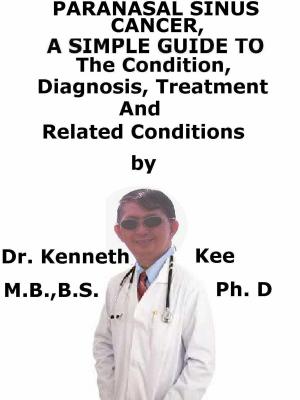Apraxia, (Poor Skilled Movements) A Simple Guide To The Condition, Diagnosis, Treatment And Related Conditions
Nonfiction, Health & Well Being, Health, Ailments & Diseases, Musculoskeletal, Nervous System & the Brain| Author: | Kenneth Kee | ISBN: | 9781370037902 |
| Publisher: | Kenneth Kee | Publication: | July 24, 2017 |
| Imprint: | Smashwords Edition | Language: | English |
| Author: | Kenneth Kee |
| ISBN: | 9781370037902 |
| Publisher: | Kenneth Kee |
| Publication: | July 24, 2017 |
| Imprint: | Smashwords Edition |
| Language: | English |
Apraxia is a poorly understood neurological disorder of the brain and nervous system in which a person is not able to do tasks or movements when asked, even though:
1. The request or command is understood
2. They are willing to do the task
3. The muscles needed to do the task work properly
4. The task may have already been learned
People who have it find it difficult or impossible to make certain motor movements, even though their muscles are normal.
Milder forms of apraxia are known as dyspraxia.
Apraxia can happen in a number of different forms.
1. One form is orofacial apraxia.
People with orofacial apraxia are not able to willingly do certain movements needing facial muscles
They are not be able to lick their lips or wink.
2. One form of apraxia affects a person's capability to purposefully move arms and legs.
3. With apraxia of speech a person finds it difficult or not possible to move his or her mouth and tongue to speak.
This occurs, even though the person has the desire to speak and the mouth and tongue muscles are physically capable of forming words.
Childhood apraxia of speech (CAS) is known as a motor speech disorder.
Children with CAS have problems saying sounds, syllables, and words.
Causes
Apraxia is caused by injury to the brain.
When apraxia forms in a person who was previously capable to do the tasks or abilities, it is called acquired apraxia.
The most frequent causes of acquired apraxia are:
1. Brain tumor
2. Disorder that causes gradual degeneration of the brain and nervous system (neurodegenerative illness)
3. Dementia
4. Stroke
5. Traumatic brain injury
Apraxia may also be observed at birth.
Symptoms occur as the child grows and develops.
Symptoms
A person with apraxia is not able to put together the correct muscle movements.
At times, a totally different word or action is used than the one the person had intended to speak or make.
The person is often conscious of the mistake.
1. Buccofacial or orofacial apraxia.
There is inability to carry out movements of the face on demand, such as licking the lips, sticking out the tongue, or whistling.
2. Ideational apraxia.
There is no capability to perform learned, complex tasks in the correct order, such as putting on socks before putting on shoes.
3. Ideomotor apraxia.
There is inability to voluntarily do a learned task when given the necessary objects.
4. Limb-kinetic apraxia.
There is difficulty making precise movements with an arm or leg.
When diagnosing apraxia, experts may look for weakness or difficulties with language understanding.
Both of these are indicative of other disorders and their presence would help exclude apraxia.
CT or MRI scans of the brain may help show a tumor, stroke, or other brain injury
Treatment:
In some patients who have acquired apraxia, the illness will recover spontaneously.
This is not the situation with developmental apraxia of speech which does not go away without treatment.
During treatment, therapists will direct on:
1. Repeating sounds over and over to teach mouth movements
2. Slowing down the person's speech
3. Teaching different techniques to help with communication and movement
4. Recognition and treatment of depression is important for people with apraxia.
To help with communication, family and friends should:
1. Avoid giving complex directions.
2. Use simple phrases to avoid misunderstandings.
3. Speak in a normal tone of voice.
Other tips for daily living are:
1. Maintain a relaxed, calm environment.
2. Take time to show people with apraxia how to do a task and give enough time for them to do so.
3. Do not ask them to repeat the task.
4. Suggest other ways to do the same things
5. Provide communication aids such as computer
TABLE OF CONTENT
Introduction
Chapter 1 Apraxia
Chapter 2 Causes
Chapter 3 Symptoms
Chapter 4 Diagnosis
Chapter 5 Treatment
Chapter 6 Prognosis
Chapter 7 Aphasia
Chapter 8 Achalasia
Epilogue
Apraxia is a poorly understood neurological disorder of the brain and nervous system in which a person is not able to do tasks or movements when asked, even though:
1. The request or command is understood
2. They are willing to do the task
3. The muscles needed to do the task work properly
4. The task may have already been learned
People who have it find it difficult or impossible to make certain motor movements, even though their muscles are normal.
Milder forms of apraxia are known as dyspraxia.
Apraxia can happen in a number of different forms.
1. One form is orofacial apraxia.
People with orofacial apraxia are not able to willingly do certain movements needing facial muscles
They are not be able to lick their lips or wink.
2. One form of apraxia affects a person's capability to purposefully move arms and legs.
3. With apraxia of speech a person finds it difficult or not possible to move his or her mouth and tongue to speak.
This occurs, even though the person has the desire to speak and the mouth and tongue muscles are physically capable of forming words.
Childhood apraxia of speech (CAS) is known as a motor speech disorder.
Children with CAS have problems saying sounds, syllables, and words.
Causes
Apraxia is caused by injury to the brain.
When apraxia forms in a person who was previously capable to do the tasks or abilities, it is called acquired apraxia.
The most frequent causes of acquired apraxia are:
1. Brain tumor
2. Disorder that causes gradual degeneration of the brain and nervous system (neurodegenerative illness)
3. Dementia
4. Stroke
5. Traumatic brain injury
Apraxia may also be observed at birth.
Symptoms occur as the child grows and develops.
Symptoms
A person with apraxia is not able to put together the correct muscle movements.
At times, a totally different word or action is used than the one the person had intended to speak or make.
The person is often conscious of the mistake.
1. Buccofacial or orofacial apraxia.
There is inability to carry out movements of the face on demand, such as licking the lips, sticking out the tongue, or whistling.
2. Ideational apraxia.
There is no capability to perform learned, complex tasks in the correct order, such as putting on socks before putting on shoes.
3. Ideomotor apraxia.
There is inability to voluntarily do a learned task when given the necessary objects.
4. Limb-kinetic apraxia.
There is difficulty making precise movements with an arm or leg.
When diagnosing apraxia, experts may look for weakness or difficulties with language understanding.
Both of these are indicative of other disorders and their presence would help exclude apraxia.
CT or MRI scans of the brain may help show a tumor, stroke, or other brain injury
Treatment:
In some patients who have acquired apraxia, the illness will recover spontaneously.
This is not the situation with developmental apraxia of speech which does not go away without treatment.
During treatment, therapists will direct on:
1. Repeating sounds over and over to teach mouth movements
2. Slowing down the person's speech
3. Teaching different techniques to help with communication and movement
4. Recognition and treatment of depression is important for people with apraxia.
To help with communication, family and friends should:
1. Avoid giving complex directions.
2. Use simple phrases to avoid misunderstandings.
3. Speak in a normal tone of voice.
Other tips for daily living are:
1. Maintain a relaxed, calm environment.
2. Take time to show people with apraxia how to do a task and give enough time for them to do so.
3. Do not ask them to repeat the task.
4. Suggest other ways to do the same things
5. Provide communication aids such as computer
TABLE OF CONTENT
Introduction
Chapter 1 Apraxia
Chapter 2 Causes
Chapter 3 Symptoms
Chapter 4 Diagnosis
Chapter 5 Treatment
Chapter 6 Prognosis
Chapter 7 Aphasia
Chapter 8 Achalasia
Epilogue
